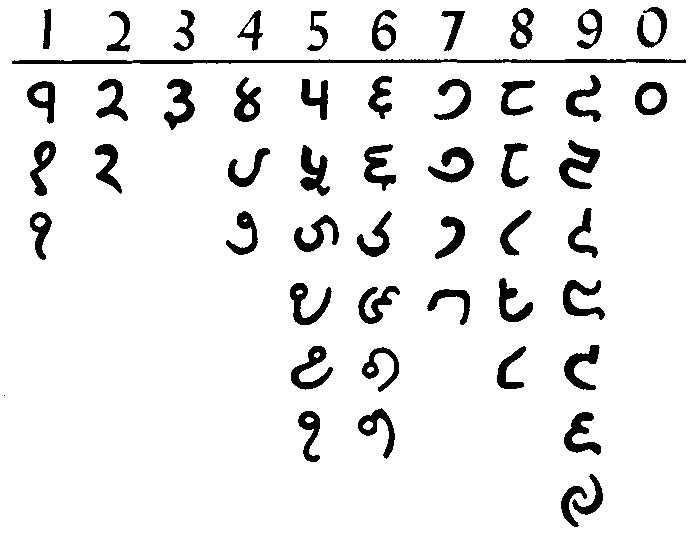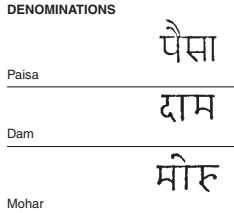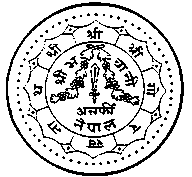Nepalese coins identify - how to read
Brief history of Nepal
The Kingdom of Nepal, the world’s only surviving Hindu kingdom, is a landlocked country occupying the southern slopes of the Himalayas. It has an area of 56,136 sq. mi. (140,800 sq. km.) and a population of 27 million. Capital: Kathmandu. Nepal has deposits of coal, copper, iron and cobalt, but they are largely unexploited. Agriculture is the principal economic activity. Rice, timber and jute are exported, with tourism being the other major foreign exchange earner.
Apart from a brief Muslim invasion in the 14th century, Nepal was able to avoid the mainstream of Northern Indian politics, due to its impregnable position in the mountains. It is therefore a unique survivor of the medieval Hindu and Buddhist culture of Northern India, which was largely destroyed by the successive waves of Muslim invasions.
Apart from agriculture, Nepal owed its prosperity to its position on one of the easiest trade routes between the great monasteries of central Tibet, and India. Nepal made full use of this, and a trading community was set up in Lhasa during the 16th century, and Nepalese coins became the accepted currency medium in Tibet.
A popular revolution in 1950 toppled the Rana family and reconstituted power in the throne. In 1959 King Mahendra declared Nepal a constitutional monarchy, and in 1962 a new constitution set up a system of panchayat (village council) democracy. In 1990, following political unrest, the king’s powers were reduced. The country then adopted a system of parliamentary democracy.
On June 2, 2001 tragedy struck the royal family when Crown Prince Dipendra used an assault rifle to kill his father, mother and other members of the royal family as the result of a dispute over his current lady friend. He died 48 hours later, as King, from self inflicted gunshot wounds. Gyanendra began his second reign as King (his fi rst was a short time as a toddler, 1950-51)
Nepalese numerals - Nepali and English digits
Nepal has used more variations of numerals on their coins than any other nation. The chart below illustrates some variations encompassing the last four centuries

Dating
Saka Era (SE)
Up until 1888AD all coins of the Gorkha Dynasty were dated in the Saka era (SE). To convert from Saka to AD take Saka date and add 78 to arrive at the AD date. Coins dated with this era have SE before the date in the following listing.
Bikram Samvat Era (VS)
From 1888AD most copper coins were dated in the Bikram Samvat (VS) era. To convert take VS date - 57 = AD date. Coins with this era have VS before the year in the listing. With the exception of a few gold coins struck in 1890 & 1892, silver and gold coins only changed to the VS era in 1911AD, but now this era is used for all coins struck in Nepal.
Monetary system
Many of the mohars (mohur) circulated in Tibet as well as in Nepal, and on a number of occasions coins were struck from bullion supplied by the Tibetan authorities. The smaller denominations never circulated in Tibet, but some of the mohars were cut for use as small change in Tibet. In these listings only major changes in design have been noted. There are numerous minor varieties of ornamentation or spelling. With a few exceptions, most all coins were struck at Kathmandu.
COPPER
Initially the copper paisa was not fixed in value relative to the silver coins, and generally fluctuated in value from1/32 mohar in 1865AD to around 1/50 mohar after 1880AD, and was fixed at that value in 1903AD. 4 Dam = 1 Paisa 2 Paisa = 1 Dyak, Adhani
COPPER and SILVER
Decimal Series 100 Paisa = 1 Rupee Although the value of the copper paisa was fixed at 100 paisa to the rupee in 1903, it was not until 1932 that silver coins were struck in the decimal system.
GOLD COINAGE
Nepalese gold coinage, until recently, did not carry any denominations and was traded for silver, etc. at the local bullion exchange rate. The three basic weight standards used in the following listing are distinguished for convenience, although all were known as Asarphi (gold coin) locally as follows: GOLD MOHAR 5.60 g multiples and fractions TOLA 12.48 g multiples and fractions GOLD RUPEE or ASHRPHI/ASARFI 11.66 g multiples and fractions (Reduced to 10.00 g in 1966). In some instances the gold and silver issues were struck from the same dies.

Nepali coins obverse and reverse
Obverse of coin

Shree Shree, Shree 5 Gyanendra Bir Bikram Shah Dev, 64 dots around coins represent 64 Yoginies (Goddesses), Religious emblems like Crescent, Sun, Spinning wheel, Conch, Lotus, Mace and Trident, Year 2058 BS
Reverse of coin

64 dots similar to obverse, Middle circle reads Shree Shree Shree Gorakha Nath, Inner circle reads Shree Bhawani (Goddess Durga), Asarfi (gold coin), Nepal and Khadga (double-edged sword)
